Are you new to Family Trees?
Want to create your own modern 3D family tree that you can share with close and extended family?
Need a free option to get you started?
Start with your notes...
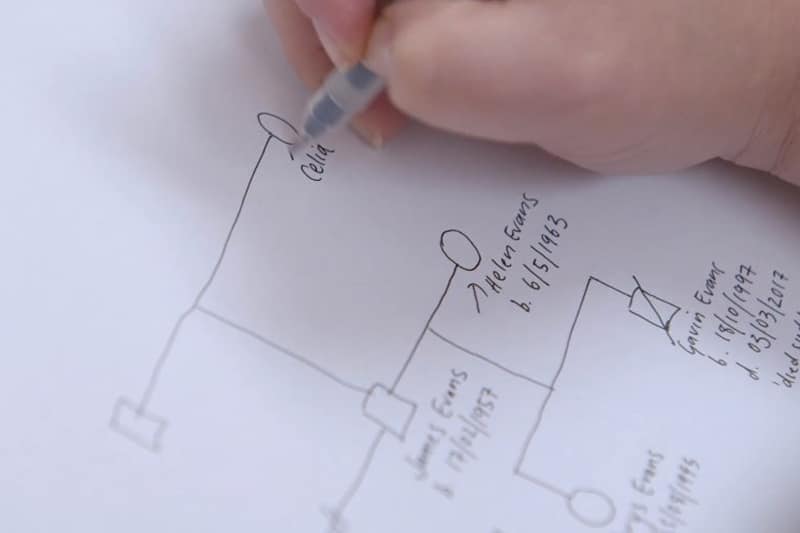
...end up with this!
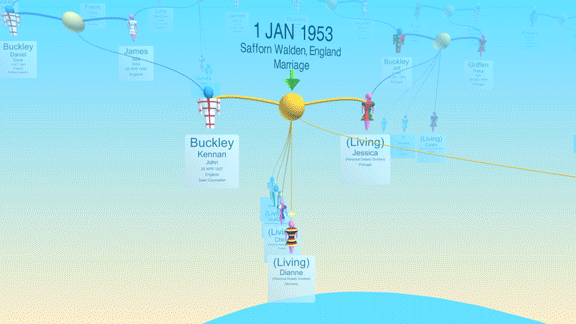
In this article we propose a convenient way to create a modern 3D family tree for free without the problems and obstacles that hinder many people.
This article walks you through the steps to create a modern 3D family tree from scratch:
- Start Simple – We suggest some free genealogy software so you can start entering your family tree data.
- Run With What You Know – Next, enter basic information for the relatives and ancestors you know about.
- Transform Your Data – No need to print it. Use Clanview to “publish” your flat data as a 3D family tree.
How will this article help you?
- You will create a 3D family tree with the benefits that come with modern display and sharing.
- You have the flexibility to change the software you use later as your tree and research skills grow.
- You avoid an expensive online genealogy service until you're ready to make the most of it.
Upfront Disclaimer: Please note that this article provides suggestions to help people new to creating family trees. We offer this advice based on years of experience and we hope the article is helpful, but you are under no obligation to follow our suggestions, and of course, you are subject to the terms and conditions of any product you choose to use.
Step 1 - Start Simple
“Publishing” a Clanview 3D family tree is not like publishing a book. It’s a quick and convenient alternative to paper-based printing that you can do as often as you wish, as long as you have some family tree data.
So the first step is to choose some software or an online service that allows you to enter relatives and ancestors to build your family history data. There’s a lot to choose from – each with various pros and cons.
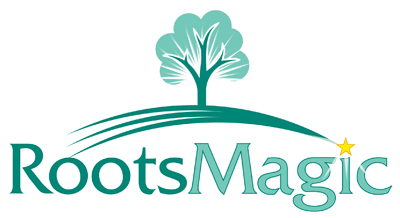
To get you started, we recommend trying software like RootsMagic Essentials. We have no affiliation with RootsMagic – we simply suggest it because it’s good and it ticks all the boxes for new users to make their first family tree, including:
- It’s compatible – It runs on your Windows or Mac computer.
- It’s free – there’s no subscription to an online service to worry about.
- It’s flexible – If you want to change later, you can easily move your data to a different program or online service.
After you download and install RootsMagic Essentials on your computer, you can immediately get started, with a familiar view of a classic family tree to fill in.
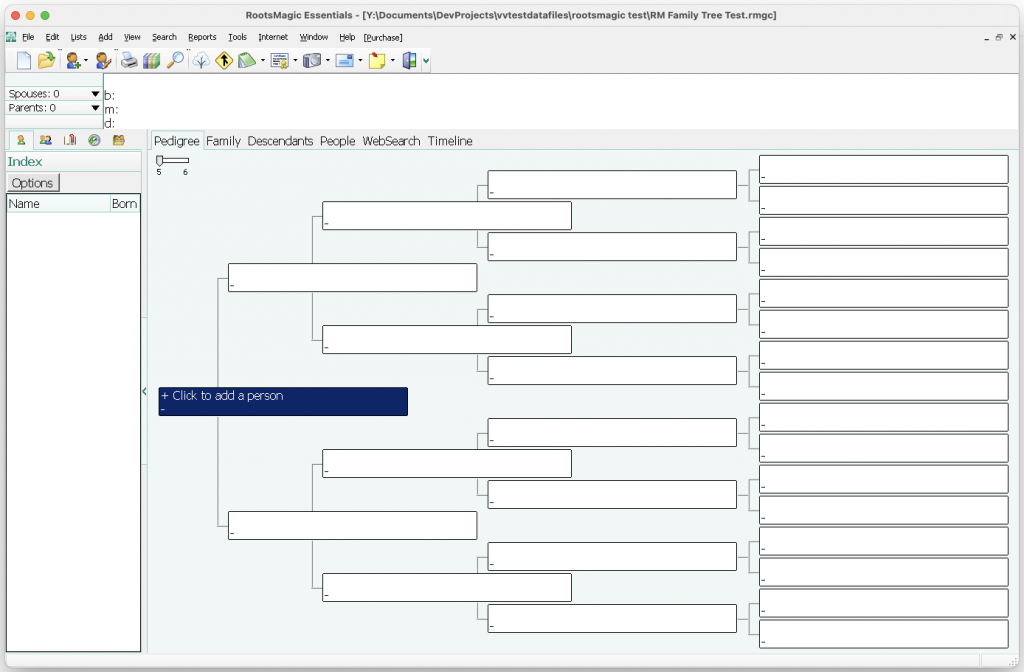
Note: There are lots of other genealogy research programs/services that you could choose – Clanview is compatible with the majority of current programs/service available.
Step 2 - Run With What You Know
Start by entering all relatives and ancestors you already know about.
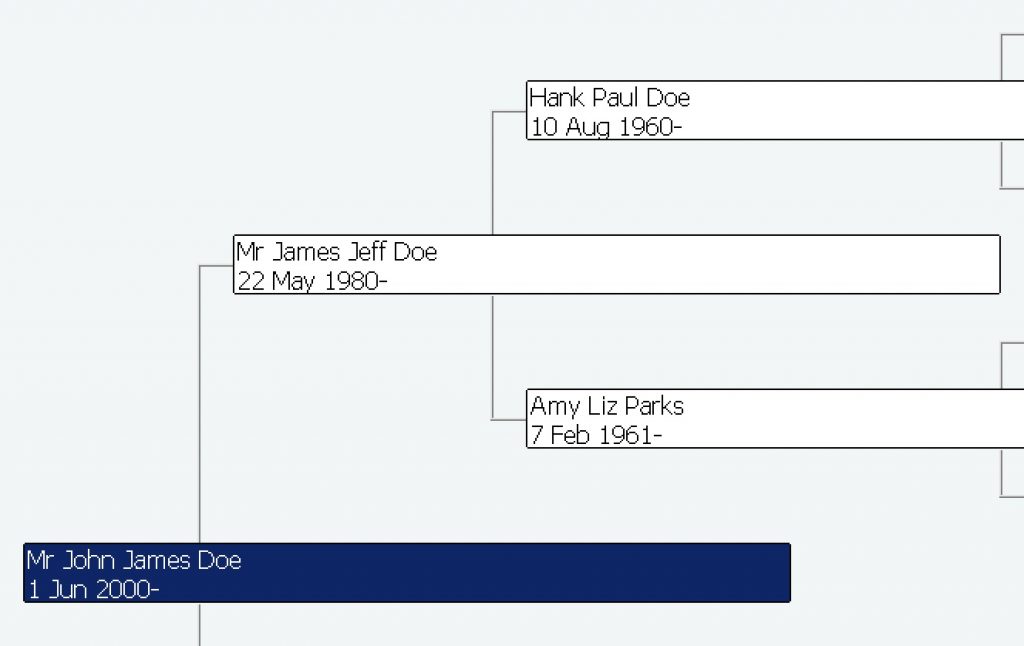
Even before you start searching through library archives and digitised records, you should be able to enter a lot of people into your tree, including:
- Yourself (of course!)
- Parents and Grandparents
- Siblings
- Aunts and Uncles
- Cousins
- And maybe some Grandparent Siblings, Second Cousins or Great Grandparents
For each person, for now, just enter what you know. Information like:
- Name
- Birth Date – Estimate for now if unsure
- Place of Birth – Use the format: Town/City, State, Country
- Facts – like Occupation, if you know it
- Notes – any interesting snippets you’re aware of
Step 3 - Transform Your Data
You are now ready to quickly publish your family history data as a Clanview 3D family tree and share it.

Don’t worry! This is not as hard as it sounds and it has lots of benefits over paper printouts.
There are two parts:
- First, use RootsMagic to export your family tree data,
- Then, use your Clanview Account to transform your data (“publish” it) as a 3D family tree.
The result is an independent 3D version of your family tree that’s designed to be easily shared with recipients who can instantly explore your 3D family tree interactively on any computer or device.
First, use RootsMagic to export your family tree data
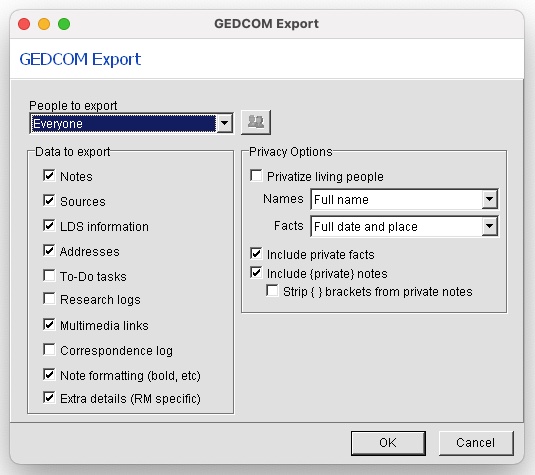
In RootsMagic, choose:
- Choose File menu → Export…
- Select the information to include or exclude.
- Click OK and save your GEDCOM data file on your computer.
In case you’re wondering, a “GEDCOM” data file is a standard file format used by genealogy programs and services.
Then, use your Clanview Account to publish your 3D family tree
If you haven’t already, create your personal Clanview Free online account.
You can then proceed to “My Account” where you will be guided, in 3 steps, to publish your 3D family tree using your data file from RootsMagic.
It only takes a few minutes. We walk you through the steps here (and there’s a short video if you need it).
That's It - Now Explore and Share
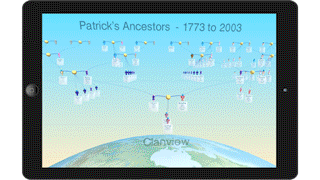
You now have your own 3D Family Tree with all of these great features:
- Your published 3D family tree has its own unique web address (URL link) that’s impossible for others to guess.
- You can easily send this link privately to relatives to open at their leisure.
- Clanview 3D family trees exclude confidential information about living people (by default) for security reasons.
- Recipients can use the link to instantly open your 3D family tree on their computer, tablet or smartphone.
- Each user is free to explore the 3D family tree interactively with no catches like sign-up or apps to download.
Remember, as you update your data, it’s easy to re-publish and make your 3D family tree even better with our:
We're Here To Help
Clanview sharing is a great way to showcase your work, involve others and prompt feedback from relatives that allows you to grow your family tree.
We wish you all the best in your family tree journey as you uncover more distant ancestors and progress your skills of research and record hunting to validate them.
We’re here to help. To learn more about Clanview, please explore our website.
If you have any questions, please contact us anytime by emailing support@clanview.com or using our Contact Us page.


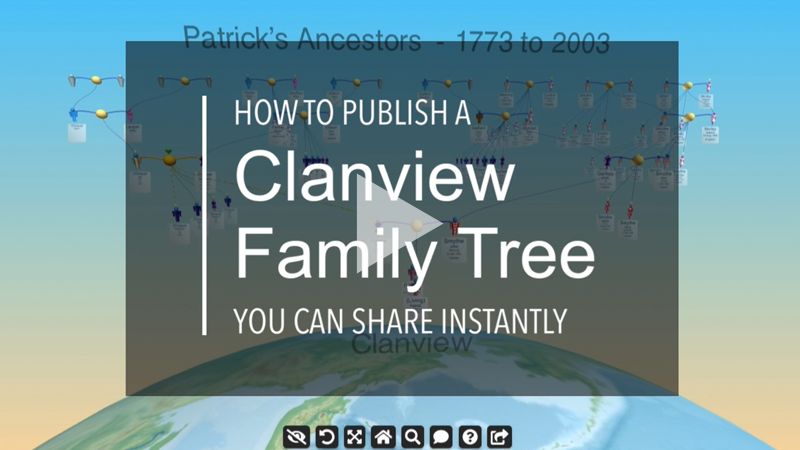
Leave a Reply